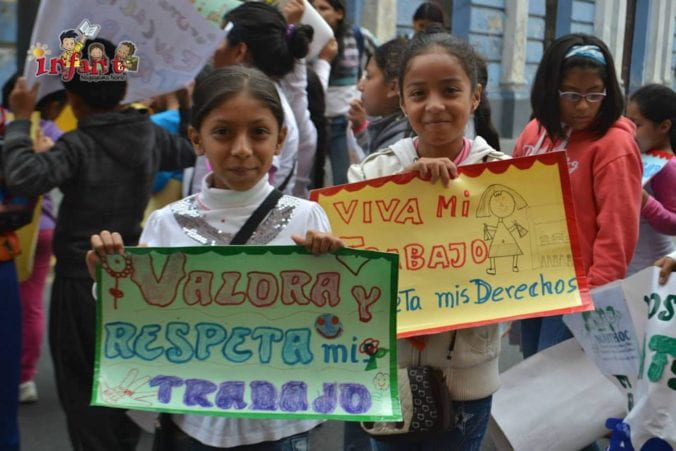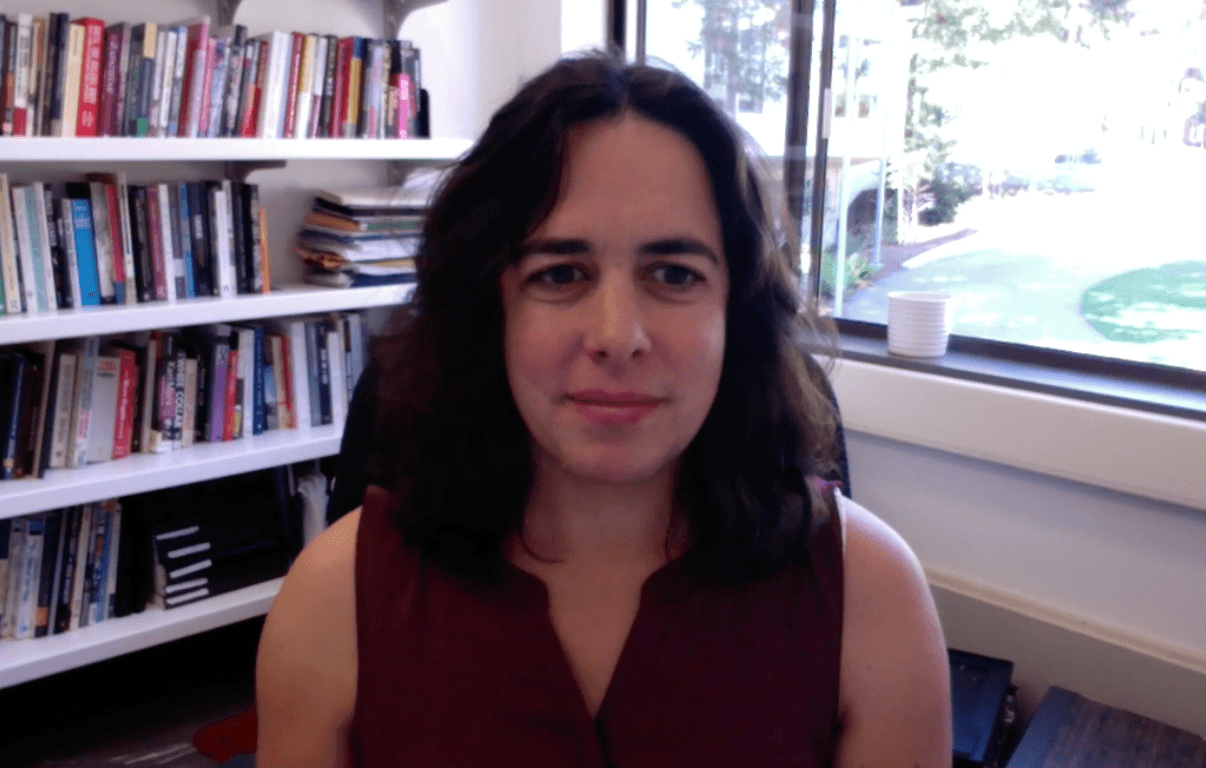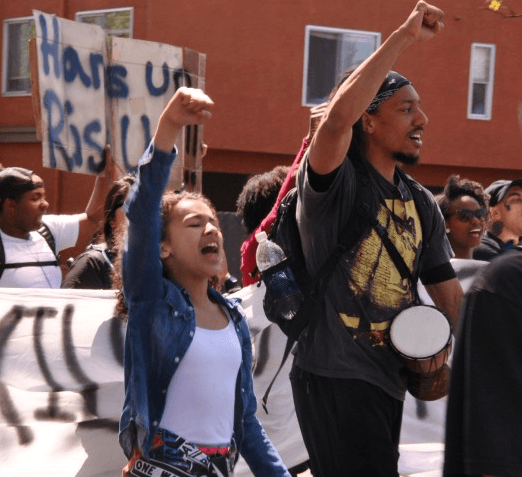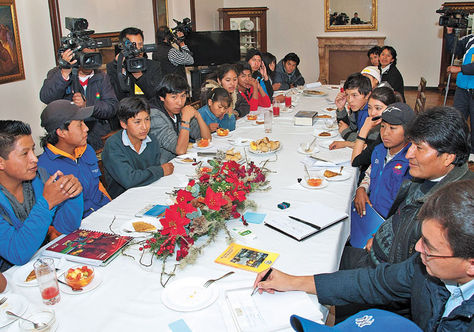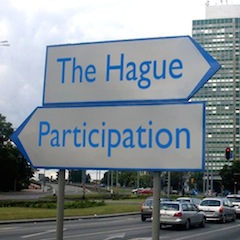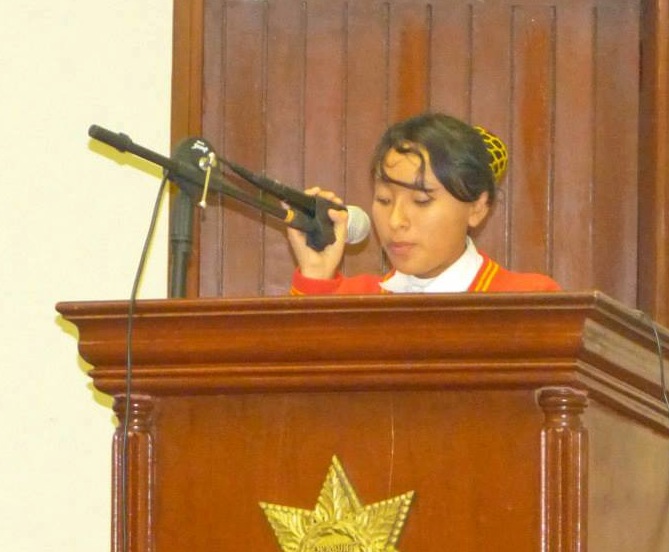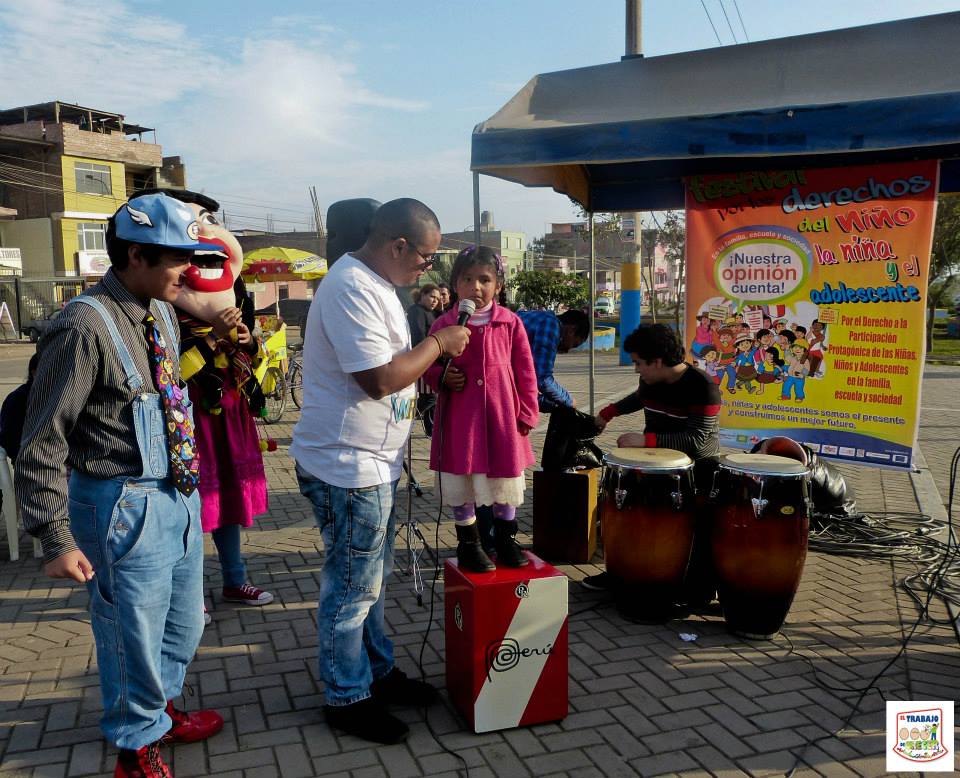I’ve recently written two new short pieces that highlight the political visions of the Peruvian movement of working children. The first, for the Intergenerational Foundation, focuses on intergenerational collaboration and what young activists want and need from their adult supporters and allies. The second, written as part of a series on children’s work for the Childhood, Law & Policy Network, explores the movement’s ideas about dignified work, exploitation, and inequality.
Jessica K. Taft
Sociological fragments on kids, politics, and social change
I was asked to make and share a video in response this question for Mobilizing Ideas and the Informing Activists video series. There are tons of great videos of social movement scholars sharing research that will be useful to organizers and activists. Check them out!
I recently participated in an essay dialogue at Mobilizing Ideas on “Millennials and Activism.” While I don’t usually take up a generational lens in my work (focusing more on the identity categories of youth/girl/child/adult), it was a good opportunity to think a bit about the ways that generational categories get used in conjunction with ideas about youth. You can find it here.
This spring I wrote a short piece for Open Democracy about the movement of working children and how they seek to support them as social, political, and economic actors.
The movements of working children in Bolivia have recently made international news for their productive meeting with President Evo Morales, after which he made an official statement that “child labor should not be banned.” Responding to a legislative proposal to ban all children under the age of fourteen from any kind of work, Morales drew on his own experience as a working child and on his conversation with representatives from the Bolivian working children’s movements to not only argue that banning child labor can make it more dangerous (as it goes underground) but also that working children are often working to support their families or to fund their own education, and thus demonstrate a “social conscience.” Echoing some of the language of the movement, Morales also clearly stated that child laborers should not be exploited, and that they deserve and need the protection of the state. Morales’ agreement with the NATs on the potential value and importance of their work is remarkable in the context of the hegemonic international narratives about the need to abolish all child labor and the ongoing pressure on developing nations to raise their minimum age laws. It is a statement that positions him in opposition to some powerful social and political forces and is being seen by working children’s movements around Latin America as a major success. Notes of congratulations and solidarity have been sent from the Latin American transnational movement and from several different national organizations of working kids. The meeting last week was the result of many years of organization, education, and advocacy, and came only after public indignation over violent police repression of a march of working children. It reminds us that children’s movements are not merely spaces of learning, but also can be highly effective at achieving their political goals. It also provides an opportunity to consider some of the tensions within public discourses on working children. The image of working children as pure victims — as tragic innocents exploited by unscrupulous adults — is hard to reconcile with the pictures of these same children sitting with the President, smiling, and telling him that they want to be able to keep their jobs. Working children’s voices and their stories about why they like their work and why they want to work substantially call into question the association of “child labor” only with its worst and most brutal forms. New calls for listening to children and for children’s “participation” in public life all suggest that children’s perspectives should be heard. But, the perspectives of working children challenge many of the common assumptions about child labor, making these voices hard to integrate into the hegemonic and “common-sense” public narratives. Thus, many of the news stories on this important meeting seem a bit confused, presenting a whole array of ILO statistics on child labor alongside the various statements of Morales and the NATs without attempting to figure out how these different elements actually relate to another.
Starting tomorrow, the International Labor Organization will be hosting a Global Conference on Child Labor in Brasilia. In response to this conference, the Latin American and Caribbean movement of working children has made the statement that I post below. As a scholar of social movements, the thing I find most striking about this statement is the fact that it is just the most recent in a long chain of very similar statements written by the movement over the past 20 years. The movement appears, from my perspective, to be somewhat stuck in the same “tactical repertoire” and has not yet found an effective way to challenge and engage with the major global institution that is one of its primary targets/opponents. Questions of long-term movement strategy and whether and how to make tactical shifts are, perhaps, hard to address in the context of a movement where participants “age out” of leadership so quickly? In any case, the critiques offered by the movement in this statement, and in many others, are quite important, but their impact continues to be limited.
I post the full statement here in order to share more of how the movement of working children approaches the subject of “child labor” and their rejection of the ILO’s goal of its eradication. [Note: the translation is my own].
MOLACNATs Statement: A Response to the Third Global Conference on Child Labor, Brasilia 2013
We, the organized working children and adolescents of Latin America, based on our more than 30 years of experience at the local, national, and regional levels, want to express our opinion publicly in response to the new event promoted by the ILO, The Third Global Conference on Child Labor, which will occur from the 8th-11th of October in Brasilia, Brazil. Our statement here draws on many years of lived experience, and on our own diverse realities, particularly on our experiences working in Latin America. Various cultural, social and economic factors shape and determine our work experiences and the ways that we, and our families, understand the role of work in our lives.
Our analysis and opinion presented here focuses on the preparatory documents for the event in Brazil: “Base Document of the 3rd Global Conference on Child Labor” and “Marking Progress Against Child Labor.”
- Despite the fact that they speak of open, democratic participation in the processes of preparation and consultation for these documents and for the event in Brazil, once more organized working children, who have direct experience with the topic of “child labor,” have been excluded. In addition to being a violation of the principle of participation, expressed in the Convention on the Rights of the Child, our absence from these spaces of discussion and of the creation of policies, disallows the inclusion of alternative perspectives on what the ILO has acknowledged to be a complex and multi-faceted issue.
- These preparatory documents claim that the Convention on the Rights of the Child states that child labor is “a violation of the human rights of the child.” However, article 32 states explicitly children’s right to be protected from economic exploitation and from performing any work that is likely to be hazardous, to interfere with his or her education, or to be harmful to the child’s health, or physical, mental, spiritual, moral or social development. The language of the Convention clearly establishes that what needs to be combatted is economic exploitation in work, not work itself.
- As with the event at The Hague in 2010, these documents use statistics on the quantity of working children at a global level that, from our perspective, do not correspond with reality. This is an important element to take into account when claims are being made regarding the supposed effectiveness of the policies that have been implemented under the logic of the gradual elimination of child labor. There are discrepancies amongst the various documents published from within the United Nations and the research studies conducted in individual countries, some of which have indicated that either the number of working children in the world has increased or that the decrease has been very small or non-existent. In this sense, and in response to the campaign launched in 2010 with the “Road Map” for abolishing the worst forms of child labor by 2016, we would argue that the results are not as positive as the preparatory documents suggest.
- The ILO continues to base their reports on an assumed mechanical relationship between school desertion and children’s work and/or the educational deficiencies of children who work and study at the same time. This is despite the fact that the presented statistics show that 70% of children who work also go to school, and other research has demonstrated that in many cases work is what enables us to continue to study, and that the experience of work also can be educational for us in many ways.
- Our attention is also drawn to how the ILO addresses domestic work. On the one hand, domestic work is only included in their statistics when it is done in the homes of other people. On the other hand, when they make reference to the work that we do in our own homes, or with and for our own families, it is not included in the statistics and is often presented in a negative way. There is no consideration of how these practices are related to our cultures, or how they have positive elements like supporting our education or the construction of solidarity in our families. Furthermore, the statistics in this case are especially arbitrary and do not provide a global estimate of the labor done in our own homes, which would certainly considerably increase the number of children and adolescents who work.
- We note that the ILO and those who are part of its international advocacy do not assume nor assign any responsibility for the crisis in the global economic system, nor for the consequences that the crisis has generated for the majority of the global population, whether they be adult, youth, and child workers. The Brasilia Base Document only states in an abstract and general way that, “the structure of the labor market… does influence the incidence of child labor in different ways. Firstly, the existence of an informal economy means that often a significant part of the economic and labor relationships escapes regulation and inspection by competent authorities, opening the way for the use and exploitation of the work force of children.”
- The documents reflect a stigmatization of cultural patterns that, according to the studies, are determinants that increase the occurrence of child labor. This stigmatization and criticism of our cultures is used to explain and justify the failures of policies that not worked to eradicate child labor, such as cash transfer programs.
Finally, we would like to express to the society at large, that, as a social movement, we are committed to continuing to struggle to achieve the implementation of the rights of children and adolescents, in general, and working children and adolescents in particular, and to working together with other popular sectors for the creation of policies that can transform our world.
MOLACNATS, September 30, 2013
I recently attended a meeting between Rosa Maria Ortiz, the Rapporteur on the Rights of the Child for the Inter-American Commission on Human Rights, and representatives of children’s organizations from around Lima. The meeting highlighted for me the breadth and depth of children’s rights activity in Peru, but also some of the limitations of the right to participation.
It was obvious at this meeting that the organizational terrain of children’s rights and children’s participation in Lima is quiet extensive. There were kids from a veritable alphabet soup of organizations, each of which is dedicated to promoting kids’ rights and each of which has substantial leadership from the kids themselves. This includes a consultative council to the institutions of city government (CCONNA), the youth delegates in a nation-wide association of adult-led organizations that focus on children and children’s rights (CONADENNA), two different networks of kids’ organizations (CONNAUPI and RedNNA), school-based organizations for students’ development and rights within each educational institution (Municipios Escolares), and organizations of working children (MANTHOC, MNNATSOP, and ATO-Colibri), plus several others. While there are many differences between these organizations, they share a discursive emphasis on the promotion of children’s rights and children’s participation. The kids who are part of these groups are all familiar with the UN Convention on the Rights of the Child and they spoke fluidly and extensively about how they felt their rights were being supported and/or violated in various contexts of their lives in Lima. Certainly compared to the US context, where the frame of “children’s rights” is far less visible and where there are very few children’s organizations, this landscape of kids’ organizing activity is incredibly rich. This is perhaps not surprising given that the US is one of only a few nations to not have ratified the Convention on the Rights of the Child. However, based on my readings from other contexts, the Peruvian children’s rights field also seems to be more extensive than many nations that have signed onto the CRC. An important question, then, is what has made Peru such fertile territory for children’s organizing and the children’s rights paradigm?
Peru also has, as discussed in a recent journal article by Mikaela Luttrell-Rowland, a state apparatus for the protection and promotion of children’s rights. The DEMUNAs (Defensoría Municipal del Niño y del Adolescente) were authorized by national legislation in 1992, but without funding or structure. They have since been formalized and, with a 2003 law, became required of all municipalities (but this requirement is far from fully realized). According to Luttrell-Rowland, the main users of the DEMUNAs are not children forward their own complaints, but mothers seeking child support money from absent fathers or resources and support for addressing family violence. Her analysis of the feminist implications of a collapsing of women/children in the DEMUNA system is quite important, but the meeting with Rosa Maria Ortiz suggested another implication of this dynamic: that kids, even highly organized kids who are well-versed in the framework of children’s rights, are quite disconnected from the DEMUNA system. As the kids brought up various complaints, both Rosa Maria Ortiz and a representative from the Municipality of Lima would ask if they had taken this to the DEMUNA, but many had not even heard of the DEMUNAs, or did not know if their district had a DEMUNA, or how to access a DEMUNA. This may, in part, be because the DEMUNAs have become increasingly connected to women’s organizations than to children’s organizations.
Rosa Maria Ortiz was clearly concerned that the state apparatus for promoting and protecting children’s rights was so absent from the kids’ experiences. She noted that it was quite a struggle to create this apparatus and “now it appears as if it doesn’t even exist, when we know that it does.” Peru’s success in this area has been widely celebrated, but there is more work to be done to build channels of communication between the kids’ organizations and the defensorías so that action can be taken on the various problems that kids identify in their schools and communities.
This issue of action, or a lack of action, was also evident in the kids’ commentary on the various spaces for their participation. Indeed, it was very clear in this meeting that the kids were quite conscious of the limitations on their participation. They spoke extensively about how there are all these spaces for them to participate, the various consulting councils and organizations, but that this doesn’t mean they actually have any power or influence. They speak, but they don’t necessarily feel heard by those who make the decisions. “Participation” doesn’t necessarily grant them any authority or voice in the decisions made by policy-makers or technocrats.
Indeed, this is one of the limits of the concept in how it is articulated in the CRC. Article 12 reads: “States Parties shall assure to the child who is capable of forming his or her own views the right to express those views freely in all matters affecting the child, the views of the child being given due weight in accordance with the age and maturity of the child.” The phrase “being given due weight in accordance with the age and maturity of the child,” certainly gives governments and other bodies a fair amount of leeway regarding how they treat children’s participation and children’s voices on the issues that matter to them. And, as the kids at this meeting were noting, speaking is not the same as being heard. Participation, then, is a quite different concept from decision-making power or authority. Under article 12, children have a right to speak, but they do not necessarily have collective rights to political power. Of course, adults also often feel a lack of political power in relation to the state — social movements are one response to this problem.
Protagonismo is a concept that is often very difficult to translate into English, and it is a concept that has been developing over time in Latin America since its emergence in the popular movements in the 1960s and 1970s. Both the movements themselves and many social scientists and analysts began speaking about “protagonismo popular” to describe the collective action and engagement of the poor, whether it be in neighborhood associations or labor unions. From this historical moment, protagonismo has had a fairly open, and yet also distinctive meaning. Within the movements of working children, there has been a fair amount of writing that has tried to elaborate on this concept, to articulate what it means for children to have “progatonismo” or to be “protagonica.” Alejandro Cussianovich, one of the movement’s founders, and an important theorist, has written a great deal about this, and has argued that the idea of children’s protagonismo makes up a key part of a Latin American theory of childhood.
Protagonismo is not unrelated to the idea of a protagonist, in the literary sense. It suggests the ability to act, to move a story forward. It is clearly an active, not a passive position. According to one piece written by some of the youth in the movement, “protagonismo expresses the presence of children and youth as social and political actors.” Protagonismo implies agency, an individual’s capacity to act in the world.
But it is not an entirely individualist concept – it is also a collective one. An individual can be a protagonist, but the protagonismo of children, as it is invoked by these movements, also implies children working together in organization, and developing and enacting their protagonismo as a group. Tied to the history of social movements, it doesn’t just imply that children are capable social actors, but that they can be a collective entity, a social sector, just like “workers” or “women,” or “the indigenous,” etc, and that this entity has particular interests. According to one text, “children’s protagonismo initiates and develops a process of restructuring the world in the best interests of children.” It also implies a challenge to children’s lower status, it suggests that children are not “less than” others, and that they have important roles to play in the world. It also suggests that they can and should be the ones who make decisions about their own lives (with the support of adults).
On July 18th, the kids involved in the project Trabajo de Crecer put on a festival in Villa El Salvador to educate the public (both adults and children) about children’s rights. There was a lot of singing, dancing, speeches, and many games where players were asked questions about children’s rights.
Most of the emphasis was on the right to participation. Banners and signs all proclaimed that “our opinion matters!” and that children are the present, not just the future. This right to participation, as many kids at the festival noted, is currently being threatened by changes to the Peruvian laws covering childhood and adolescence. The proposed changes state that children have rights to self-expression, participation, and assembly only with the permission and supervision of their parents. From the perspective of the movements of organized children in Peru, this is a major setback in terms of children’s rights and also violates the underlying principles of the UN Convention on the Rights of the Child, which grants children these rights without stipulating parental control.
As many scholars of childhood have noted, the participatory clause (article 12) of the Convention is a particularly significant challenge to older paradigms of childhood and requires a substantial re-thinking of children’s political and social roles. It states that “States Parties shall assure to the child who is capable of forming his or her own views the right to express those views freely in all matters affecting the child, the views of the child being given due weight in accordance with the age and maturity of the child.” This clause has led to the development of numerous children’s councils, children’s assemblies, and other participatory bodies around the world (including the Consejos Consultivas de Niñas, Niños y Adolescentes in Peru). However, these councils are often quite limited in terms of the version of democracy that they promote (as Hava Gordon and I have recently written about), in terms of their actual authority and power, and in terms of their membership.
The festival for children’s rights, as a space for building public awareness, seems to me to be one way to complement the structures of participation. State-based structures for participation help to create opportunities for the implementation of children’s rights, but festivals and public events can also play a role facilitating a cultural shift toward seeing children as social and political actors.
One of the key concepts in the movement of working children here in Peru is the idea of “trabajo digno.” The movement argues that kids should be able to work, but, like everyone else, deserve to work in jobs that are fair, safe, and non-exploitative. As this sign indicates, they argue that kids should be able to work and to go to school, and that both spaces should be spaces that respect their rights, that offer them dignity as full persons.
This concept of “trabajo digno” is often translated into English as “decent work.” But as I think more about what kids and adults here mean by the term, I am less and less pleased with this translation. Work that is decent seems like a great deal less than what is being imagined by this movement. Decent work may draw our attention to pay, occupational safety, and hours worked, but I’m not sure it captures the less material dimensions of what makes for a good job, or fair and just working conditions. Furthermore, when talking about trabajo digno, people in the movement here also talk about it as respecting and fostering the humanity of the worker. At times, this resonates with more explicitly Marxist theories around alienated labor and work as central to what it means to be human. Trabajo digno, at least as it is sometimes used by participants in the movement of working children, is far more than just “decent work” — it is non-alienated labor. And the quest for it is therefore far more radical and expansive than it would first appear in these English translations.
So, does anyone out there have examples of other ways this has been translated? Are scholars who study labor movements across the Americas using a different translation?
© 2025 Jessica K. Taft
Theme by Anders Noren — Up ↑
